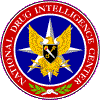ARCHIVED
![]() To Contents
To Next Page To Publications Page
To
Home Page
To Contents
To Next Page To Publications Page
To
Home Page

|
National Drug Intelligence Center Maine Drug Threat Assessment Update August 2003 HeroinTreatment data indicate that heroin is widely abused in Maine. According to the Maine Office of Substance Abuse, the number of heroin-related treatment admissions increased from 396 in SFY2000 to 816 in SFY2002. (See Table 1 in Overview section.) Heroin abusers in Maine generally are between 18 and 30 years of age. They typically administer the drug via snorting until their tolerance levels increase and they are no longer able to experience the euphoric effect of the drug. At that point they often progress to injecting the drug. Some abusers also combine heroin with powdered cocaine, commonly known as speedballing, which increases the risk of overdose. However, data regarding heroin-related deaths in the state are not available. According to the 2002 Maine Youth Drug and Alcohol Use Survey (MYDAUS), 1.3 percent of twelfth grade students in the state reported having abused heroin in the past month.
Heroin, primarily South American heroin, is readily available in Maine's southern cities and towns and increasingly is available in rural areas. Thirty-three of the 42 law enforcement respondents to the NDTS 2002 (see text box) in Maine reported the availability of heroin as high or medium. According to the Maine Drug Enforcement Agency (MDEA), state and local task force officials seized 3,183 grams of heroin in fiscal year (FY) 2002. Heroin-related arrests (109) represented 21 percent of MDEA arrests (520) in FY2002. U.S. Sentencing Commission (USSC) data indicate that 11.8 percent of drug-related federal sentences in Maine were heroin-related in FY2001, compared with 7.2 percent nationwide. According to the Drug Enforcement Administration (DEA) Portland Resident Office, heroin sold for $6,000 to $8,000 per ounce, $250 to $300 per gram, and $35 to $60 per bag in the first quarter of FY2003. Purity levels ranged from 50 to 90 percent during that period, according to the DEA Portland Resident Office.
Caucasian criminal groups, local independent dealers, and abusers are the primary transporters of heroin to Maine. These transporters typically travel to Lowell and Lawrence, Massachusetts, via private or rental vehicles to purchase gram quantities of heroin, primarily from Dominican criminal groups, then transport it back to the state for distribution. They also transport heroin into the state from Boston, Haverhill, Lynn, New Bedford, and Worcester, Massachusetts, and Hartford, Connecticut, in the same manner, albeit to a lesser extent. Wholesale-level heroin distribution in Maine is extremely limited. However, MDEA reports that Massachusetts-based Dominican criminal groups occasionally travel to Maine to sell gram quantities of heroin to retail-level distributors. The heroin sold by these groups typically is packaged in "fingers"--cut-off fingers of surgical gloves. Caucasian criminal groups, local independent dealers, and abusers are the principal retail-level heroin distributors in Maine. Retail-level heroin distribution typically occurs from private residences, bars, and other public areas. Heroin sold at the retail level most often is packaged in small glassine bags, many of which are stamped with a logo. Heroin distribution and abuse are not normally associated with violent crime in Maine. However, many heroin abusers commit theft and burglary and engage in drug distribution to fund heroin purchases. In April 2003 Maine law enforcement officials arrested two men who had committed more than 80 burglaries in the state in order to fund their heroin addictions. |
End of page.